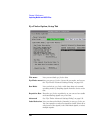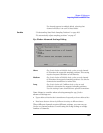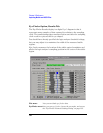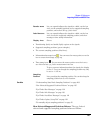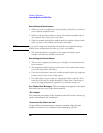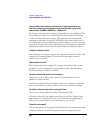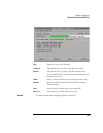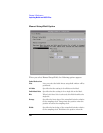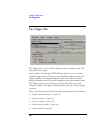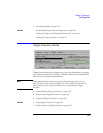
140
Chapter 3: Reference
Importing Netlist and ASCII Files
2. The stable region(s) are too small for eye finder to detect.
In this case you must resort to adjusting the sample position manually and
checking its validity by running an ordinary analyzer measurement to see if
the data values you expect are sampled. You can adjust the sample position
manually by selecting the arrow buttons or by dragging the blue sampling
position indicator in the display.
"Only a few transitions detected. Change stimulus or increase measurement
duration (Advanced Settings)."
The signal on this channel was observed to toggle fewer than 500
times. The characterization may be accepted as it stands or you may
wish to change the stimulus program or diagnostic in the device under
test to increase the toggle rate.
Another option is to select "Long" in the Eye Finder Advanced Settings
dialog (accessed from the "Advanced..." button on the Eye Finder
Setup tab or the "Advanced Settings..." menu pick under the EyeFinder
pull down menu). Using the "Long" setting won't necessarily make the
message go away, but it will ensure that eye finder has the opportunity
to observe a more significant number of transitions on the channel.
"Run Eye Finder to characterize this channel."
Select this channel (or a label that contains it) and run eye finder to
characterize the channel. Only channels selected for a measurement
are updated when the measurement finishes. Information about other
channels is not changed.
"See individual channels for message(s)"
There is a message for one or more the the channels assigned to this
bus label. Expand the label (using either the popup menu on the label
in the display or the "Results" pulldown menu), then scroll down to the
channel with a message icon and display its message (either by
selecting the yellow message icon or by using the popup menu).
"The stable region extends beyond the limits of the display."
This channel is active, but the signal does not switch within 5 nsec
before or after the clock. For example, this could occur if the
propagation delay in the device under test from clock to data is greater



